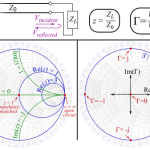Installing an energy management system can get really painful, and one of the easiest ways to overcome this problem is to consider the wireless networked energy management systems that have simply no strings attached. Here’s an overview.
Energy management becomes more vital as energy rates increase. Almost all businesses think of employing some system to assist in reducing energy usage. But for people running business in small buildings, getting an Energy Management System (EMS) installed can be difficult to rationalize in terms of the actual cost.
The returns on the actual investment for the conventional system may take a span of years to prove substantial. So the common opinion is that EMS is too intricate and expensive for smaller buildings, and hence owners are hesitant to try out the option.
However, Wireless Energy Management Systems are more effective as they save energy rates to a greater extent and are profitable. Wireless systems have many benefits that make installation possible in an extensively larger number of buildings than conventional wired systems.
The majority of commercial buildings these days are smaller buildings in the range of 1,000 square feet to 5,000 square feet. Wireless energy Management Systems are an endowment to the building owners in this floor size group as they are more willing to go for the wireless installation for its wide range of benefits.
Configuration of Wireless Energy Management System
Wireless Energy Management Systems consist of a configuration of sensors, sub-metering devices, and controls. The network includes a large self-healing mesh which increases the reliability of the configuration. It is designed using browser based remote system which makes monitoring easier with the help of a remote control. It can also be integrated with open protocol automation systems.

Wireless EMS works similar to the way in which, wireless networks at home support many devices like desktop PC, laptop, printer, etc. Wireless networks are installed in buildings, which support several controls for the main energy using devices in the building (Ex: Lighting or HVAC).
The wireless network also permits real-time monitoring of total energy consumptions in terms of KwH for the whole building. The advanced technology used enables the complete process to be taken to the internet and thus allows remote monitoring. This also helps in controlling the whole system from a centralized location.
Components Used in the Network
Let us go through the details of the components used in Wireless Energy Management System.
· Wireless Sensors:These relative humidity and temperature sensors are powered by a battery with an optional power supply. Some of these sensors come with LCDs which allows the display of temperature and RH adjustments, and measured variables.
· Wireless Thermostat Controller: These controllers are used to control oil/gas systems and heat pump systems. The thermostat is thus reliable in controlling low and high balance points. It is also designed to set temperature points from a remote location of the building.
· Wireless I/O functions: These input/output modules are wireless equipment that are more convenient and affordable than their wired counterparts. These are available with different number of inputs and outputs.
· Wireless Gateway: The gateways are designed with an integrated web server to enable browser-based remote system management. It usually consists of a radio module with an incorporated antenna.
Benefits of Wireless Energy Management System
The pricing advantage, and ease of set-up are the biggest advantages of the wireless energy network systems over the conventional ones, but there are also some more benefits, which are summarized below:
· Reliability: The wireless networks used in EMS of buildings are highly reliable. The ability of the meshes used in the configuration to self-heal and self-form increases the reliability further. Wireless EMS has performed consistently in all types of commercial buildings like restaurants, hotels, hospitals, and commercial offices.
· Affordability: Wireless systems are considerably more affordable when compared to the wired energy management systems. It overcomes the lengthy hours of hard work required to pull the lengthy wires through the building thus reducing the investment also.
· Speed: Theinstallation is not only easy but also speedy without affecting the daily functioning of the residents. Installation can also be carried out without requiring the people to shift out of the offices; this is greatly convenient!
The Bottom Line
The energy consumption of commercial buildings can be greatly reduced if the Wireless Energy Management Systems are widely implemented. Smaller buildings can also make use of the affordable wireless systems to contribute to energy saving.


